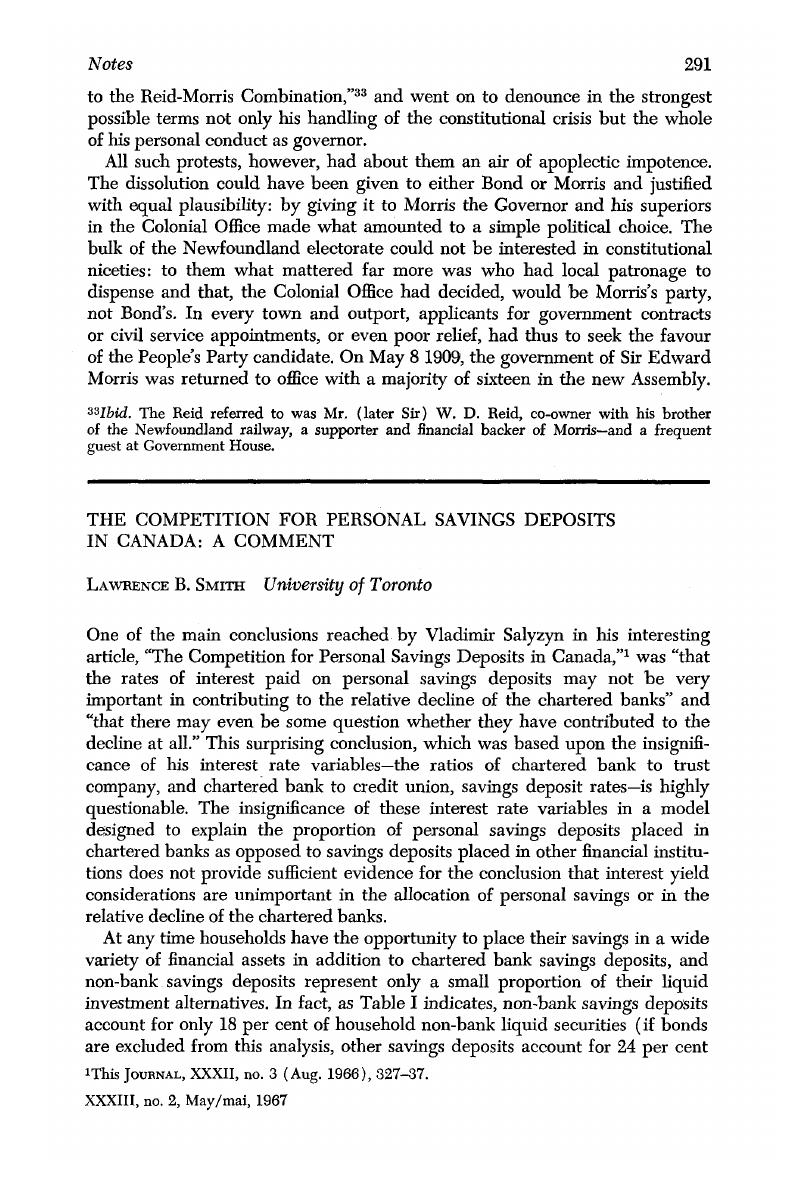Published online by Cambridge University Press: 07 November 2014

1 This Journal, XXXII, no. 3 (Aug. 1966), 327–37.
2 Even if one takes such a restricted view, at least non-bank time deposits, which account for over 50 per cent of non-bank institution funds, and the rate paid on these deposits must explicitly be taken into consideration.
3 Since Canada Savings Bonds are offered in the autumn the adjustment in their yield lags adjustments in bond, GIC, and debenture yields, but is considerably more responsive than savings deposit rates.
4 For example DeLeeuw, F. in his “Model of Financial Behaviour” in Duesenberry, J. S. et al., eds., Brookings Quarterly Econometric Model of the U.S. (Chicago, 1965), 476 Google Scholar, found the proportion of household demand deposits to wealth to be extremely sensitive to interest yields on private securities and time deposits (in each case the coefficient was three times the standard error). Also, he found interest rates to be extremely important in explaining household holdings of time deposits and US government securities.
5 This phenomenon is similar to the declining yield differential between certificate of deposit rates and treasury bill rates in the US, as the public increasingly came to accept certificates of deposit as equivalent to treasury bills.